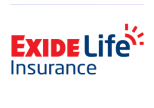Understand Different Payout Options Under A Term Insurance Policy
Table of Contents
Term insurance is a type of life insurance that is relatively inexpensive. Those interested in this type of insurance choose a policy term and pay a premium. This premium varies and is determined by the sum assured sought by the insured individual, as well as other factors discussed later in this article. If this person dies within the time period specified in their term plan, their beneficiaries/ nominees are entitled to a death benefit paid for by the insurance company. IIndividuals looking to purchase term insurance can use a term insurance premium calculator to get an estimate of how much their premium should be. In order for the calculator to provide them with an estimate, they must submit information about their age, gender, medical history, lifestyle preferences, current income, the anticipated annual increase in income, and anticipated retirement details.
A payout is a death benefit paid to the dependants or beneficiaries of a term insurance policy when the insured dies. The insured has the option to choose how the death benefit will be paid out when he or she purchases the policy. Your payment selection should be based on your family's financial knowledge, financial liabilities, and any future ambitions.
Different Types of Payout Options
Given below are some of payout options available under Term Insurance:
1. A One-Time Lump Sum Payment
This is the most popular option because it involves receiving death benefits all at once. If the life assured dies in an unfortunate event, the insurance company pays a lump sum amount equal to the sum assured to the policyholder's beneficiary/nominee.
In this case, the sum assured amount is paid out in a single payment to the life assured or their nominee/beneficiary as maturity or death benefits. This lump sum payment could also include bonuses and loyalty bonuses. Single payments ensure that the policyholder or his/her nominee receives a significant amount of money in one transaction, allowing him/her to choose to invest in other instruments or use it to meet some significant expenses such as debt repayment, college fees, housing loans, or down payments. If an insured person chooses this type of payout, their beneficiaries/ nominees receive the entire amount owed by the insurance company in a single payment.
2. One-Time Lump Sum Payment In Addition To Fixed Monthly Payments
In this case, the beneficiary/nominee receives a portion of the sum assured in the form of a single lump-sum payment. Furthermore, the insurance company is required to make monthly payments for the next few years or as specified by the insured individual when they first purchased the policy. This type of payment scheme is advantageous because the beneficiaries/nominees can use the additional monthly payment to cover their daily expenses.
3. One-Time Lump Sum Payment In Addition To Increasing Monthly Payouts
Beneficiaries of this type of term insurance payout are entitled to a single lump-sum payment equal to the entire sum assured amount at the time of the insured individual's death. In addition, they are paid sums of money that increase with each passing year for a specified period of time that the insured individual determines when purchasing this type of insurance. Such payments are subject to the terms and conditions of the policy.
4. Payments Made On A Regular Basis
In the case of periodic life insurance payouts, one portion of the benefits is paid as a lump sum, while the remainder is converted to instalments or annuities. The insurance company will pay these over a set period of time. As a result, the policyholder receives a consistent stream of income that can be used to help meet periodic payouts (regular) expenses such as utility bills, rent, or EMI payments included in loan repayment.
Raising monthly payments
There is an option to gradually increase the monthly payout, which represents payments of the total sum assured in monthly instalments.
Conclusion
Financial planners believe that if you have a good financial understanding and are confident that you will be able to manage the lump sum money efficiently, you should choose a lump sum payout option rather than a staggered payout option.
Do read - 5 Reasons Why You Should Choose Terminal Illness Benefit With Your Term Insurance Policy
Disclaimer: This article is issued in the general public interest and meant for general information purposes only. Readers are advised not to rely on the contents of the article as conclusive in nature and should research further or consult an expert in this regard.









































